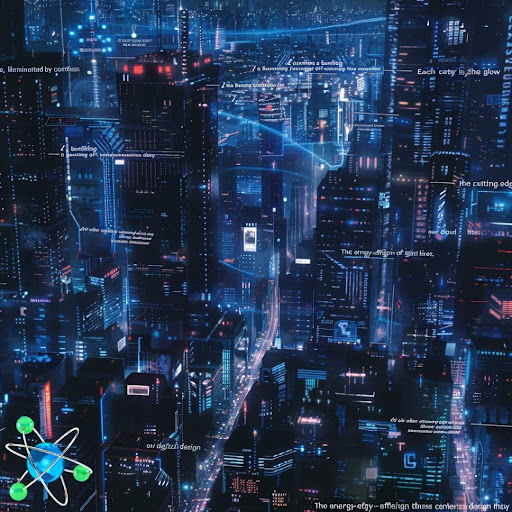
- Data Center Evolution: The rise of artificial intelligence (AI) has led to a surge in data center demand, with AI data centers requiring significantly more power than traditional ones.
- Nuclear Power as a Solution: Small Modular Reactors (SMRs) are being considered as a potential solution to meet the power demands of AI data centers, but regulatory approval and cost considerations remain challenges.
- Future Prospects: While some experts believe that nuclear power is the only viable solution, others argue that renewable energy sources may be more sustainable and cost-effective. The urgency of addressing the power demands of AI data centers underscores the need for innovative and sustainable solutions.
The exponential growth of artificial intelligence (AI) has led to a surge in the demand for data centers, which are the backbone of the digital world. These centers, often hidden in anonymous warehouses, are the powerhouses that keep the online world running smoothly. However, the advent of AI has significantly increased the power requirements of these data centers, leading to a pressing need for more efficient and sustainable power sources.
Chris Sharp, the chief technology officer at Digital Realty, a US-based company specializing in data center construction, explains that while a standard data center typically requires 32 megawatts of power, an AI data center can require up to 80 megawatts due to the intensive processing and data handling involved. This increased demand for power poses a challenge, as it competes with other sectors for resources and could potentially strain the existing power grid.
To address this issue, Sharp suggests that nuclear power, specifically Small Modular Reactors (SMRs), could be a viable solution. SMRs are advanced reactor designs that are smaller and more flexible than traditional nuclear plants, making them suitable for powering data centers. However, there are regulatory and cost considerations that need to be addressed before SMRs can be widely adopted.
Dr. Michael Bluck, from Imperial College London’s Centre for Nuclear Engineering, agrees that SMRs could be a promising solution for powering data centers. He emphasizes the need for regulatory approval and standardization of production processes to make SMRs more accessible.
On the other hand, Dr. Doug Parr, chief scientist for Greenpeace UK, raises concerns about the high cost of SMRs and the safety and waste management issues associated with nuclear power. He argues that renewable energy sources may be a more sustainable and cost-effective option for powering data centers.
Spencer Lamb, chief commercial officer at Kao Data, a British data center developer, acknowledges the potential of SMRs but believes that the deployment of nuclear-powered data centers in the UK may take time. He emphasizes the urgency of addressing the power demands of AI data centers, which are already operational and growing rapidly.
Oklo, a California-based company, claims to have an SMR design that is almost ready for deployment. Brian Gitt, in charge of business development at Oklo, believes that nuclear power is the only viable solution to meet the power demands of AI data centers. He mentions that data center operators are interested in deploying this technology within the next few years.
In conclusion, the article highlights the challenges and opportunities associated with powering AI data centers. While SMRs hold promise as a potential solution, there are regulatory, cost, and safety considerations that need to be addressed. The urgency of addressing the power demands of AI data centers underscores the need for innovative and sustainable solutions.
